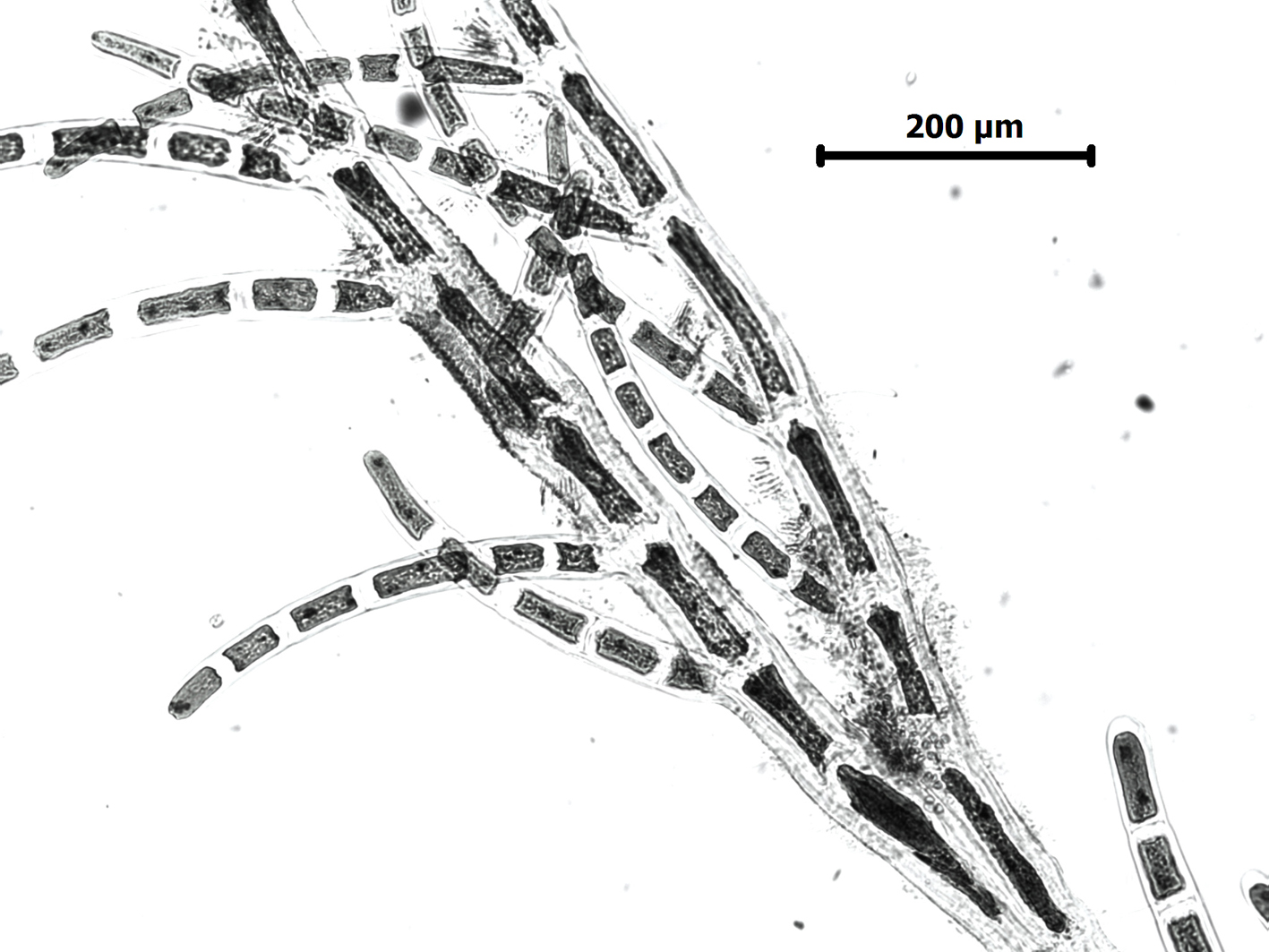Seaweeds of the South African South Coast


Order Cladophorales
Family Cladophoraceae
Cladophora sp. I indet (see Stegenga et al. 1997: 111, Plate 21:4)
“Plants forming minute dark green cushions 1-5 (-15) mm high and of about the same diameter. Thalli consisting of dense bundles of branched filaments, the basal part more or less endophytic in crustose algae. Organisation of the thallus feebly acropetal, both apical and intercalary cell divisions occurring: thallus apices often strongly curved. Branching virtually subdichotomous, laterals frequently reaching the same length as main axes. Laterals cut off via an almost transverse septum. Remaining appressed against the main axis; usually not more than one branch per cell. . Apical cells 30-45 µm in diameter, cylindrical with rounded apex. Main axes 40-65 µm in diameter, cell length from 1-3 times the diameter in distal portions to 4-6 (-15) times in proximal portions. Fertile cells developing in terminal branch sections, swollen, up to 70 µm in diameter, little longer than broad”. (Description from Stegenga et al. 1997).
Collections ecology and regional distribution
Recorded from False Bay to Goukamma oyster beds (17-29). “Often semi-endophytic on crustose algae, both fleshy (Ralfsia) and calcareous (Corallinaceae), also on the reef worm Gunnarea: in the intertidal almost up to high water mark”: Stegenga et al. (1997).
World distribution: Unknown

Cladophora sp. I thallus shape

Cladophora sp. I. Detail of thallus shape.

Cladophora sp. I. Detail of thallus apices.

Cladophora sp. I. Detail of proximal axes and laterals.

Cladophora sp. I. Microscopic habit, some thallus apices fertile. Drawing reproduced from Stegenga et al. (1997).
References Cladophora sp I:
Stegenga, H., Bolton, J.J. and R. J. Anderson. 1997. Seaweeds of the South African west coast. Contributions from the Bolus Herbarium 18: 655 pp.
Cite this record as:
Anderson RJ, Stegenga H, Bolton JJ. 2016. Seaweeds of the South African South Coast.
World Wide Web electronic publication, University of Cape Town, http://southafrseaweeds.uct.ac.za; Accessed on 07 January 2026.